If you are ready to enhance your web design with expert solutions, let’s talk!
What is the difference between these two situations?
Two platforms with similar features, pricing, and promises. One gets bookmarked, demo booked, and shared in the next board meeting. The other? Just another tab that never gets reopened.
The answer is branding.
Your B2B branding strategy should focus on trust. And trust doesn’t start with sales pitches or technical specs. It begins with authority. Your brand must feel credible, clear, and confident. One that speaks the same language as your buyers, understands their world, and shows up consistently across every touchpoint. Easy to say, harder to do? Don’t worry!
Our Arounda experts know everything about branding strategies and share them with you now. Explore how to position your SaaS or Fintech company as an authority in your space so the right people will trust you even before the first call happens.
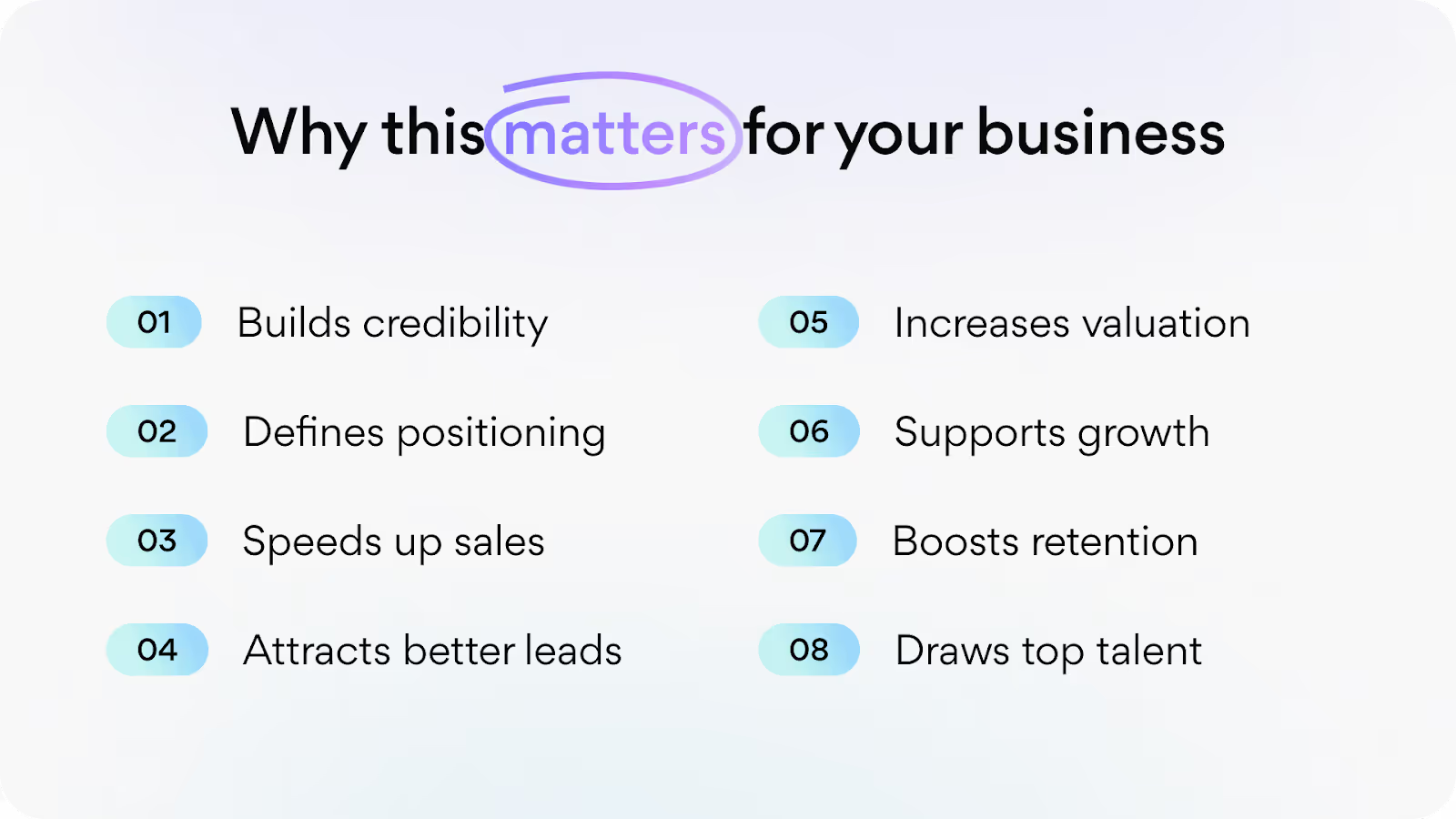
The Role of Branding in B2B SaaS and Fintech
B2B decisions are rational, complex, and high-stakes. Buyers evaluate risk, longevity, scalability, and alignment with business objectives. You should show all these points through branding to differentiate among thousands of familiar products.
What should your brand communicate?
- Stability in a fast-moving industry
- Expertise in a specialized domain
- Alignment with customer values and priorities
- Vision for long-term partnership
We gathered 3 typical questions potential customers ask scrolling through the website:
Can I trust this company?”
“Do they understand my industry?”
“Will they be here in 5 years?”
So, the branding task is to show the answer to these main questions and some additional ones. Because without a clear, consistent brand, your product can struggle to gain traction. With it, you position your company as a trusted solution provider and thought leader.
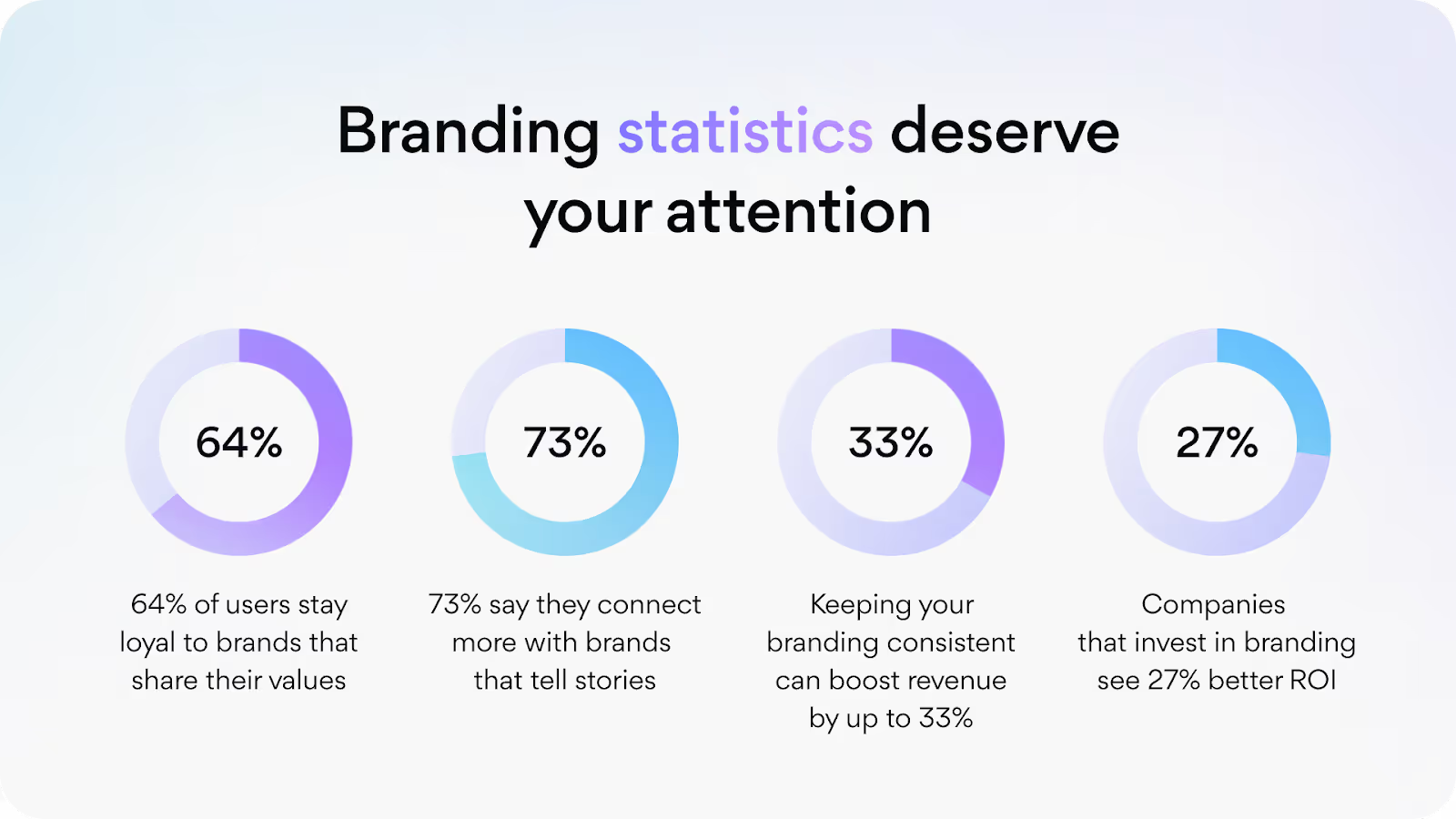
Key point!
B2B and B2C branding differ! That’s why you should clarify who your audience is and design for them.
Key Differences: Branding in B2B vs. B2C
Branding principles may apply across industries, but how they’re executed in B2B versus B2C is fundamentally different.
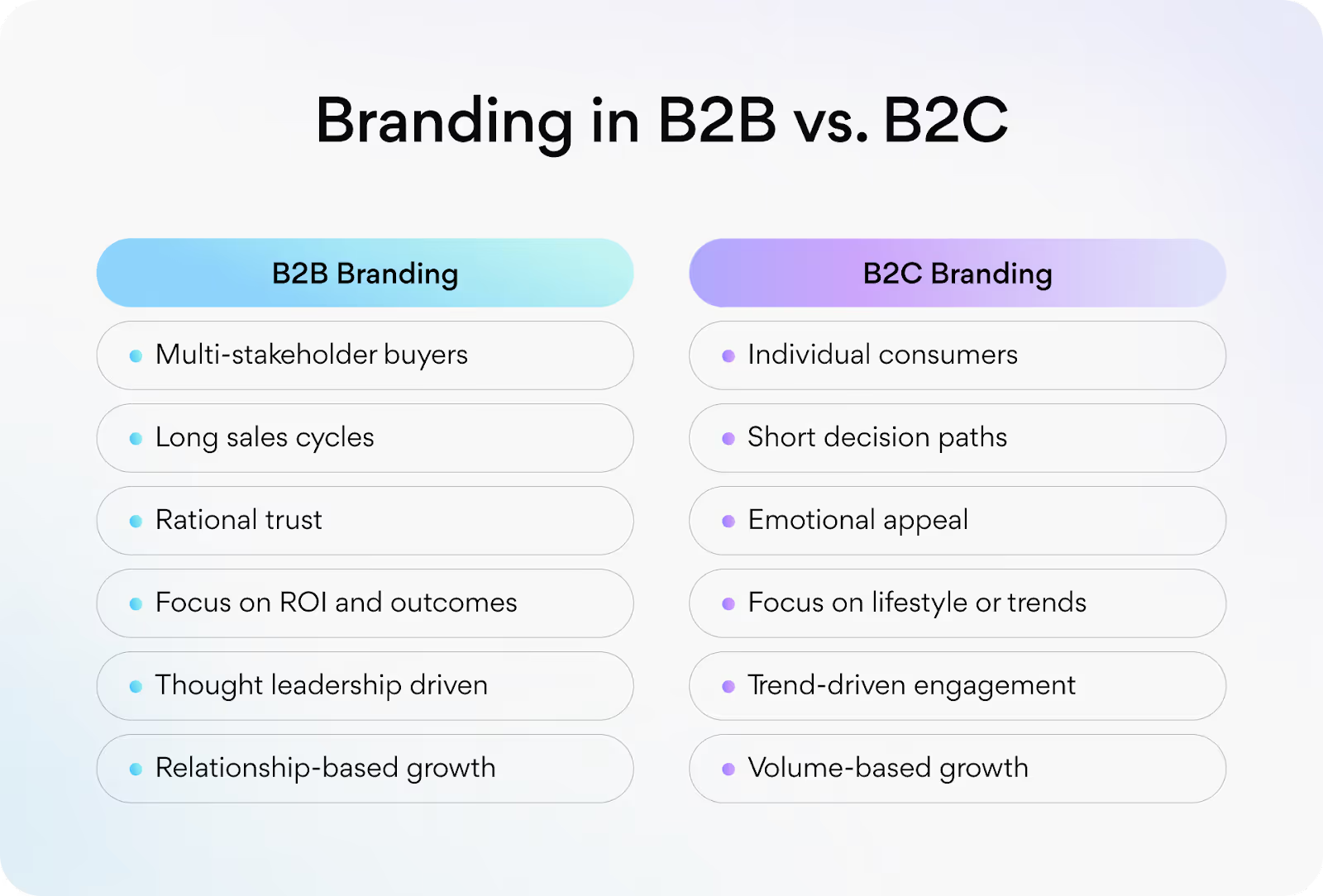
#1. Decision-making process.
How do users decide what and when to buy? B2C decisions are often emotional and immediate. B2B purchases involve multiple stakeholders, longer sales cycles, and layers of approval. So, branding must build rational trust and convey long-term value across an organization.
#2. Audience complexity.
B2C brands speak to individuals. B2B brands speak to cross-functional teams (from CEOs, CTOs, and finance officers to end users). Each of them has different concerns. You should balance technical credibility with business relevance and answers to deep and diverse field questions.
#3. Emotional appeal.
The emotional hook in B2B comes from trust, reputation, and reliability. Not impulse (“now,” “only today”...) or lifestyle!
#4. Sales cycle and relationship depth.
B2C interactions are often short-term. B2B relationships are for the long term. This means that branding should focus on consistency throughout the entire lifecycle.
#5. Value communication.
In B2C, benefits are often simple and immediate. In B2B, the value is layered (think ROI, integration, support, security, scalability). Your brand must articulate this complexity clearly but without overwhelming the audience. Challenging, right?
Arounda branding experts have solutions and step-by-step instructions to transform each challenge into brilliant persuasive performance.
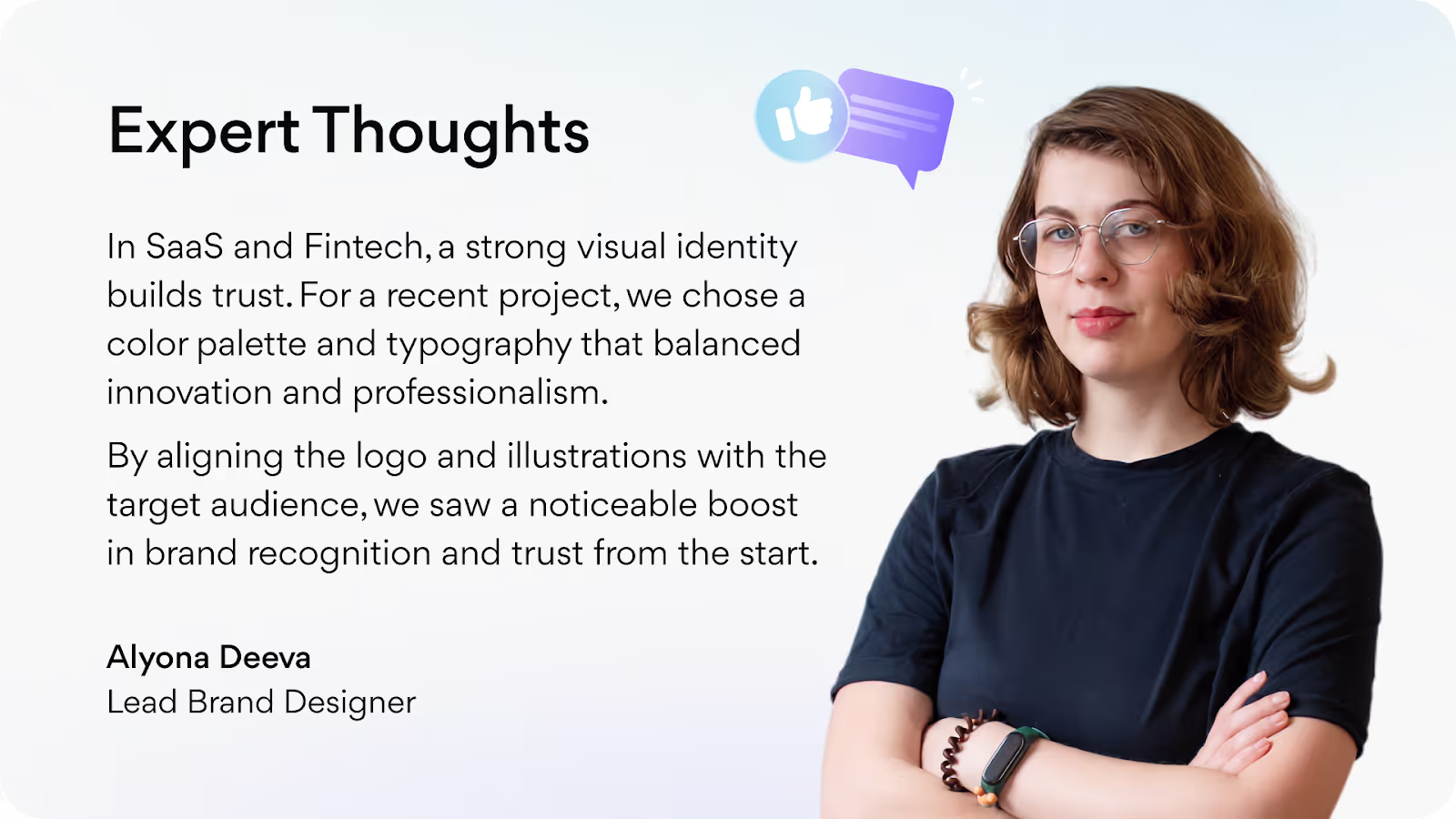
How to Build a Strong B2B Brand in SaaS and Fintech
A strong B2B brand is built with intention, clarity, and consistency. In SaaS and Fintech markets, competition is fierce, and trust is everything. Our team shares how to build a brand that speaks for you long before your sales team does.
1. Define Your Brand Strategy
Every successful brand begins with a clear strategy. Without one, you’re just adding noise.
Start by answering the big questions!
- Who are you really speaking to?
- What problems do they need to be solved?
- What do you want your company to be known for?
Take a look at our case, MOJO-CX, a customer experience platform designed to support enterprise teams. When they came to Arounda, they had a powerful product but needed clarity around their positioning, message, and visual identity.
We helped them distill a brand strategy that balanced enterprise professionalism with startup agility and highlighted their product’s value without overwhelming the audience with technical details. Together, we defined their core message to build a visual system that speaks directly to B2B decision-makers in a clear, confident voice. Get more insights into the process in our MOJO-CX case.
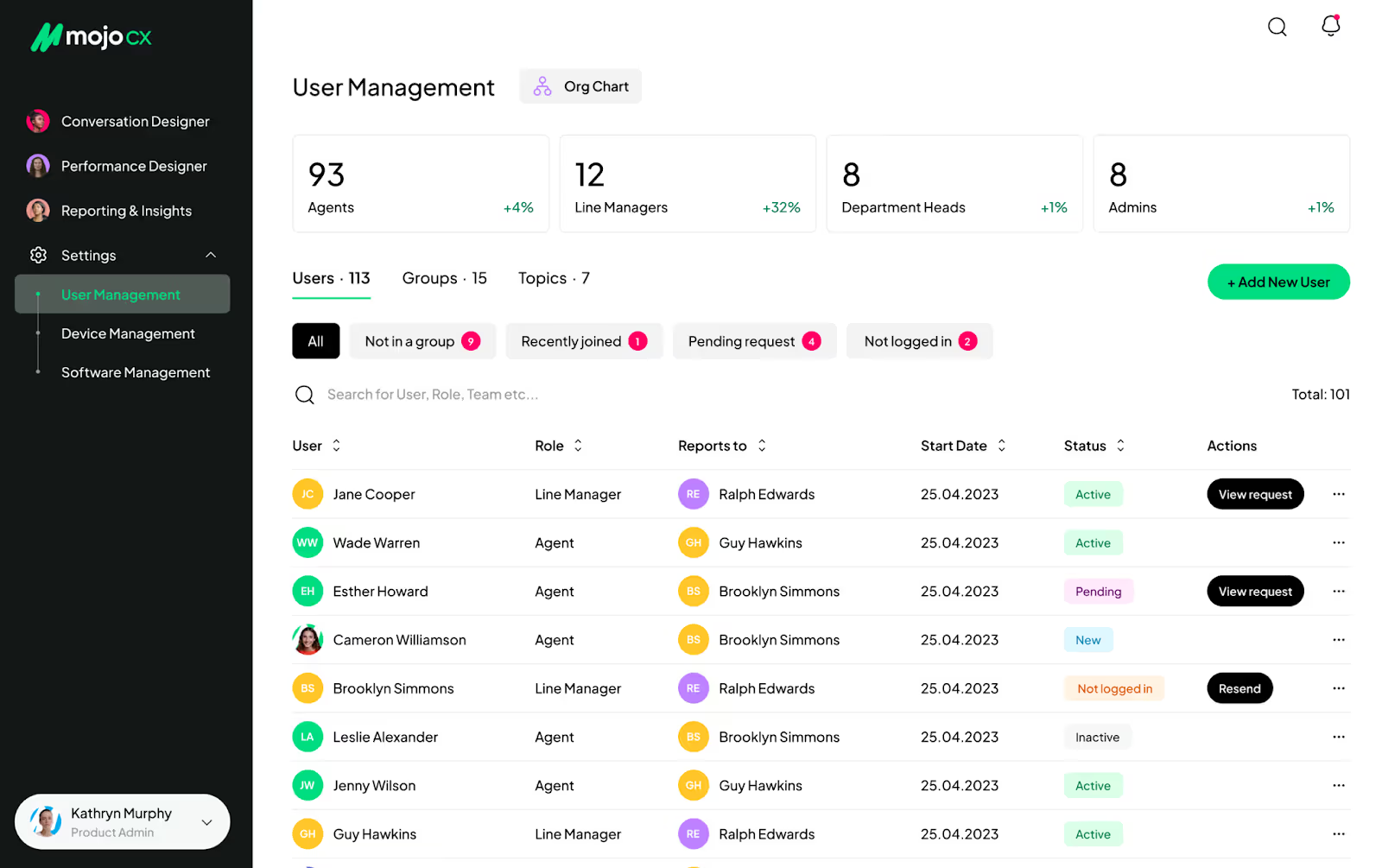
2. Establish Brand Trust Through Thought Leadership
Trust comes from showing up with value. Consistently!
Thought leadership is about creating content that educates, challenges, and genuinely helps your audience make smarter decisions. No matter what your services are! When you offer not only to buy the product but useful resources, your users will love it and trust you more. Because they will get advice not from Google or Chat GPT (they don’t know if it’s a reliable source), they get it from the expert! And this is YOU!
Publish insights backed by data. Share your point of view on emerging trends. Show your expertise; don’t just claim it.
How to do it? Website blog, e-courses, social media, expert interviews, checklists, cases, etc.
For example, Arounda is a digital design agency. You may think that we offer only design solutions. But no! We help people learn more about high-quality, user-centered, correct design through our blog, email courses, Linkedin with expert publications, etc.
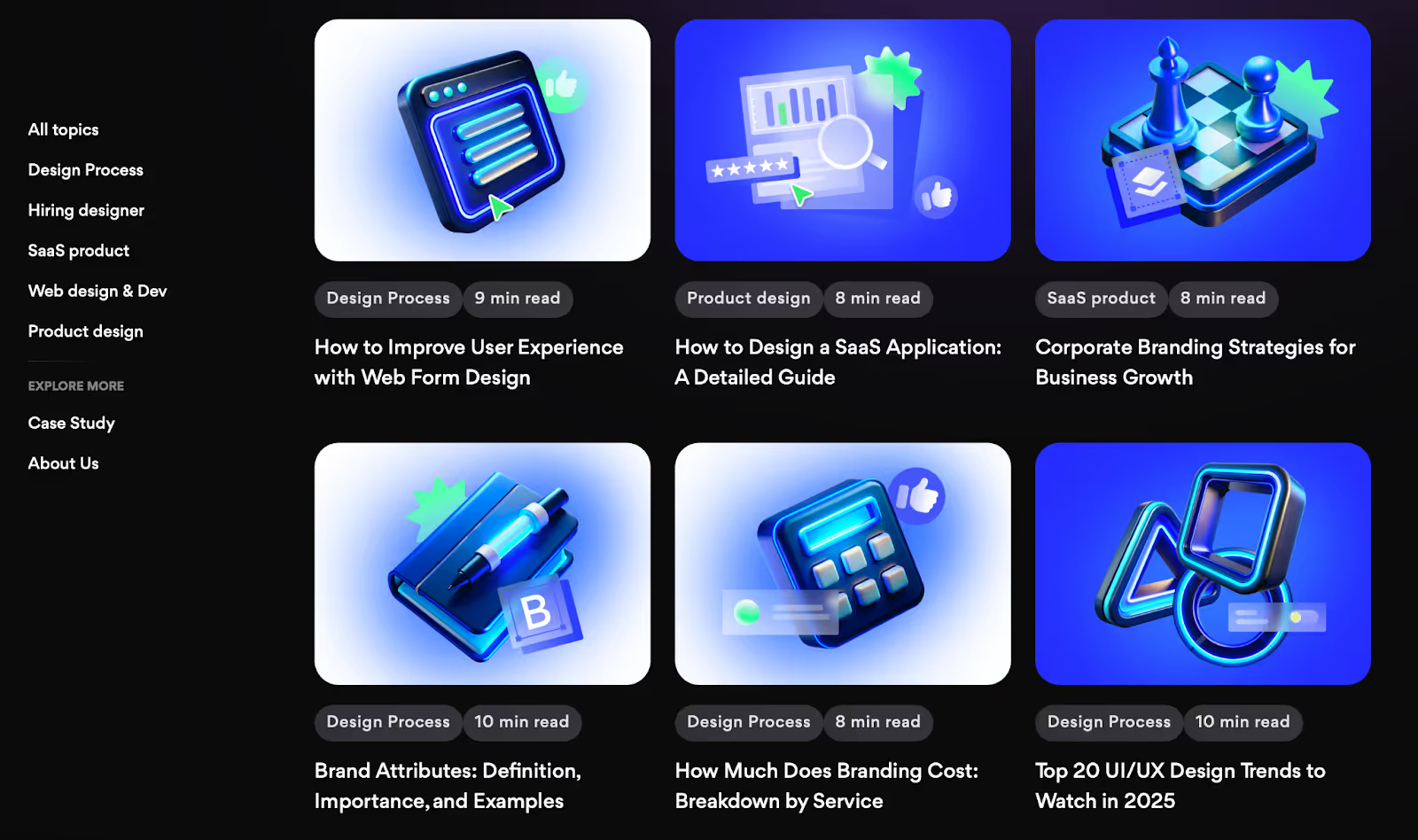
Don’t tell people that you are an expert; show it!
3. Invest in Visual Identity and Consistency
Your brand identity should be a consistent visual system that reflects your strategy, signals credibility, and creates an emotional connection. It's your logo, colors, typeface, and tone of voice.
Every touchpoint with all brand attributes should feel like part of one story. From your website to your pitch decks to your LinkedIn posts.
Example? Here’s one of our Fintech cases, Astra. It’s a forex platform that provides instant cryptocurrency withdrawals, excellent trading conditions, and 24/7 live support. Our designers have created a powerful design system and developed a style guide to make Astra look and feel equally exciting everywhere. Get more insights on the project in our Astra case study.

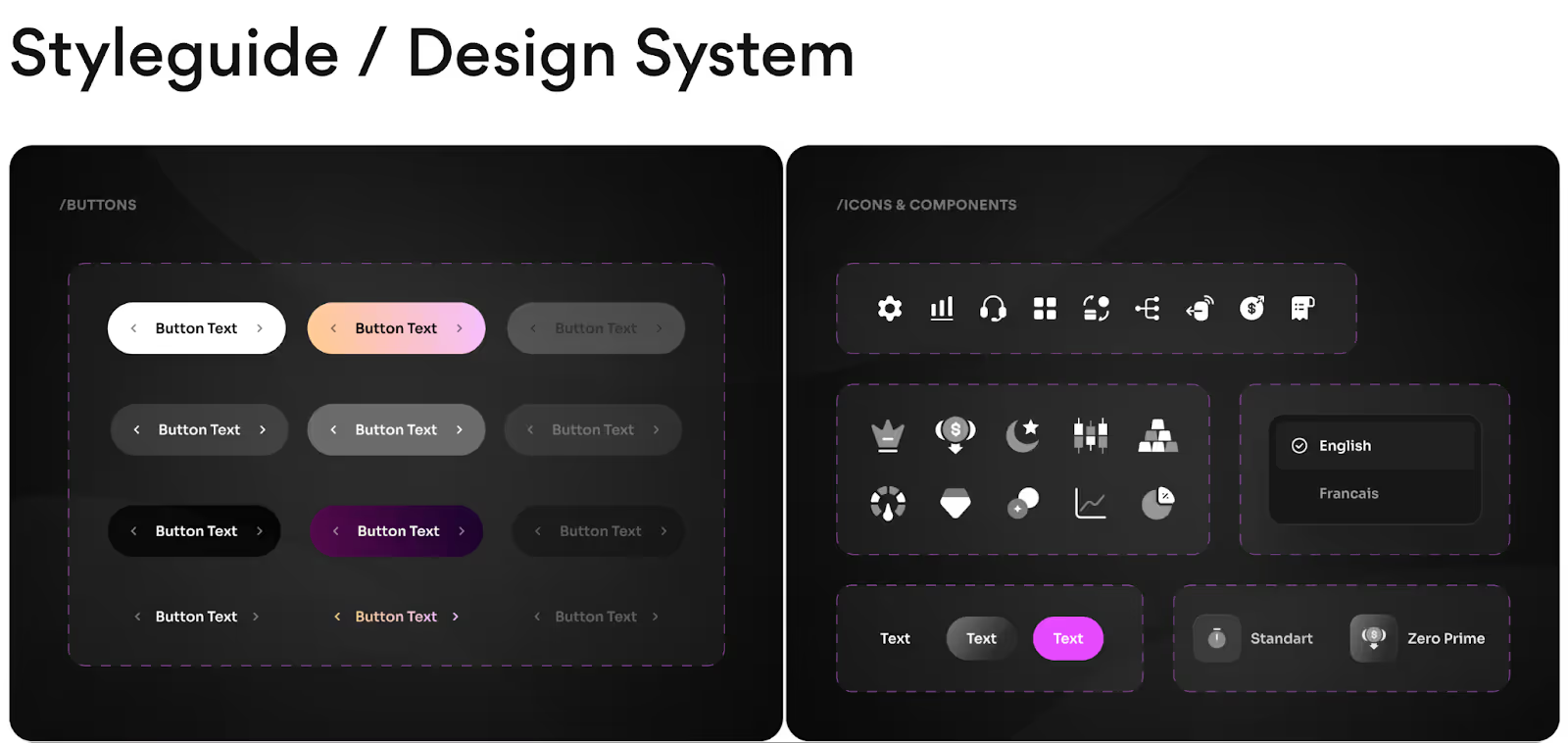
4. Leverage Data and Personalization
What do you expect as a B2B buyer? Relevance and no generic messaging. Right?
So, use data to tailor your communications. Segment your audience based on roles, company size, industry, or behavior. Create texts that directly address their needs.
Personalization in B2B isn’t about inserting a first name into an email. You have to show that you understand clients’ specific challenges and offer tailored solutions before they ask.
Here’s how we did it with our UI/UX design services.
Understand our client’s pain points and tell them what they will get.
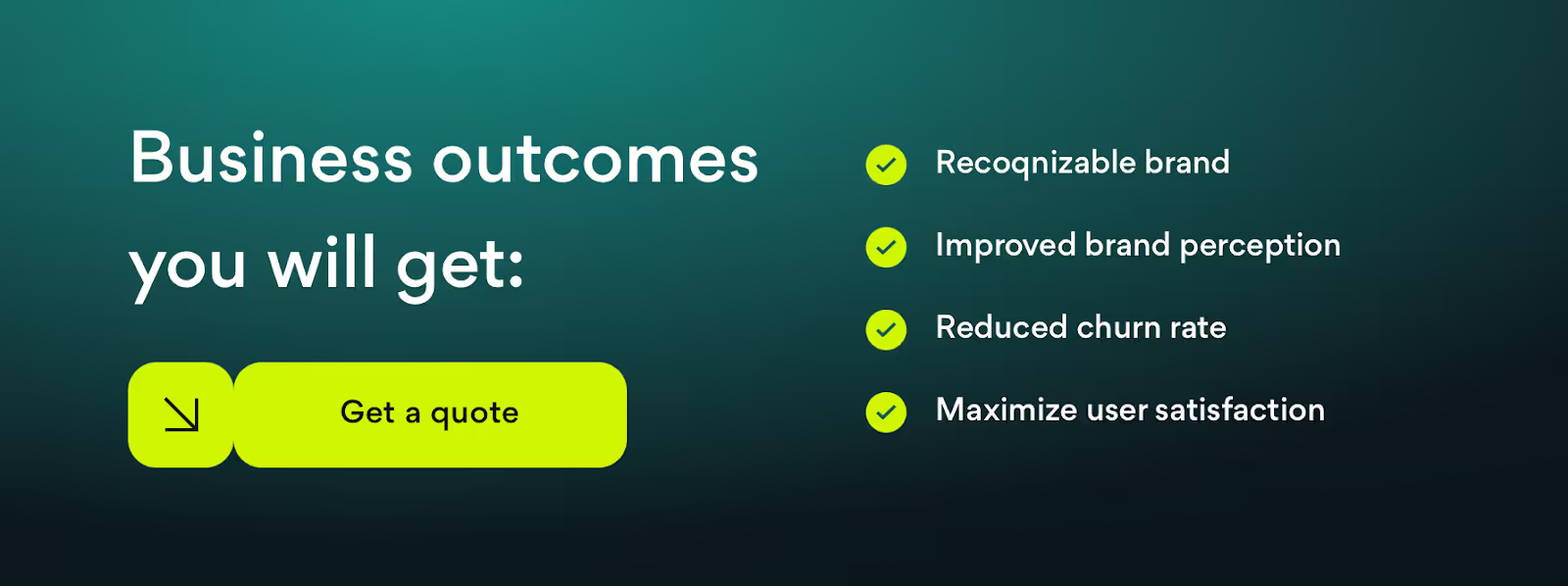
Show real numbers and examples from our clients who have already improved their branding with us.
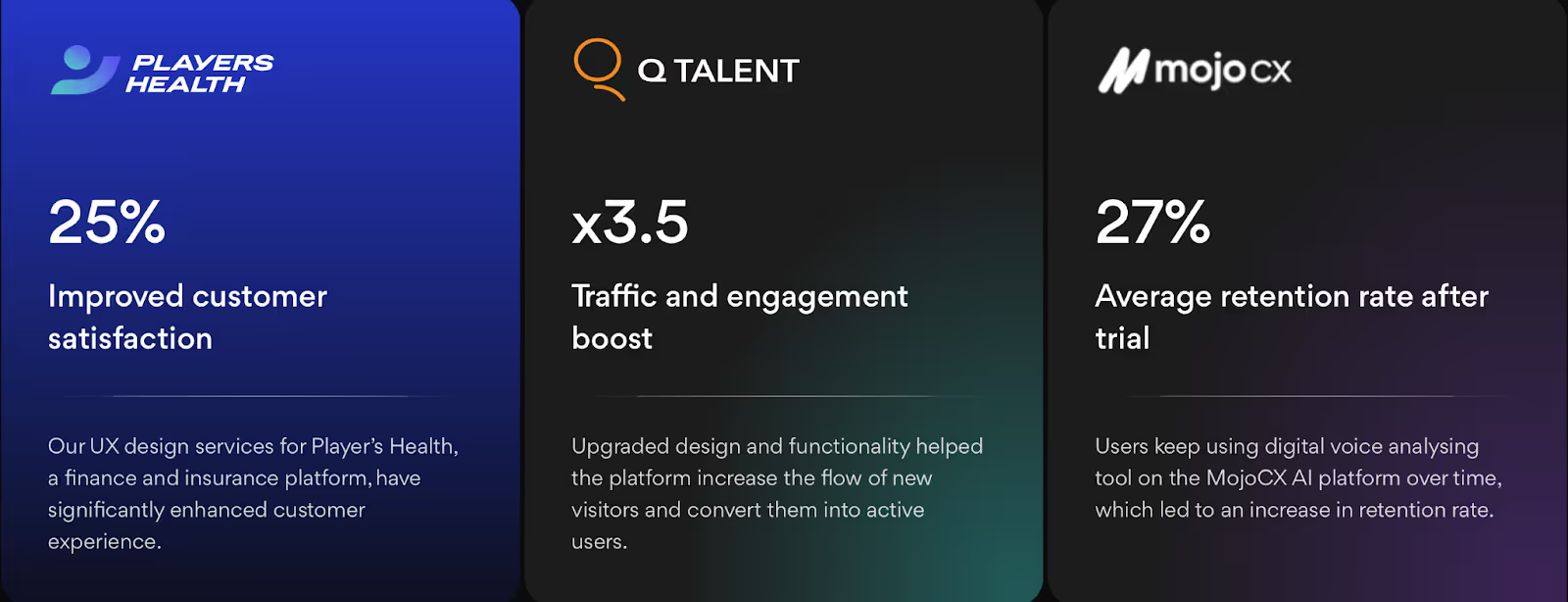
This builds trust faster, opens more doors, and turns your brand into a true partner!
5. Build Brand Authority Through Partnerships and Networking
Another important thing in brand authority is “who says it with you.”
Collaborating with respected names in your industry instantly boosts credibility! It can be a co-hosted webinar, a joint case study, being and speaking at the same event, or just cooperating with big dogs.
If your brand appears next to a known name, prospects assume you're in the same league. That’s the power of social proof in B2B.
And don’t underestimate the role of personal networks. Founders and leadership teams that actively contribute to communities (online and offline) create human connections that elevate the brand’s trust factor.
For example, our Arounda team always attends top-notch events in our industries. This helps us to make new connections, communicate with brilliant minds, share experiences, talk about ourselves, and, of course, discover all the latest news.
We tell about each event in Arounda and the CEO’s LinkedIn accounts, personal accounts of our team who attended, and a monthly newsletter. See the example.
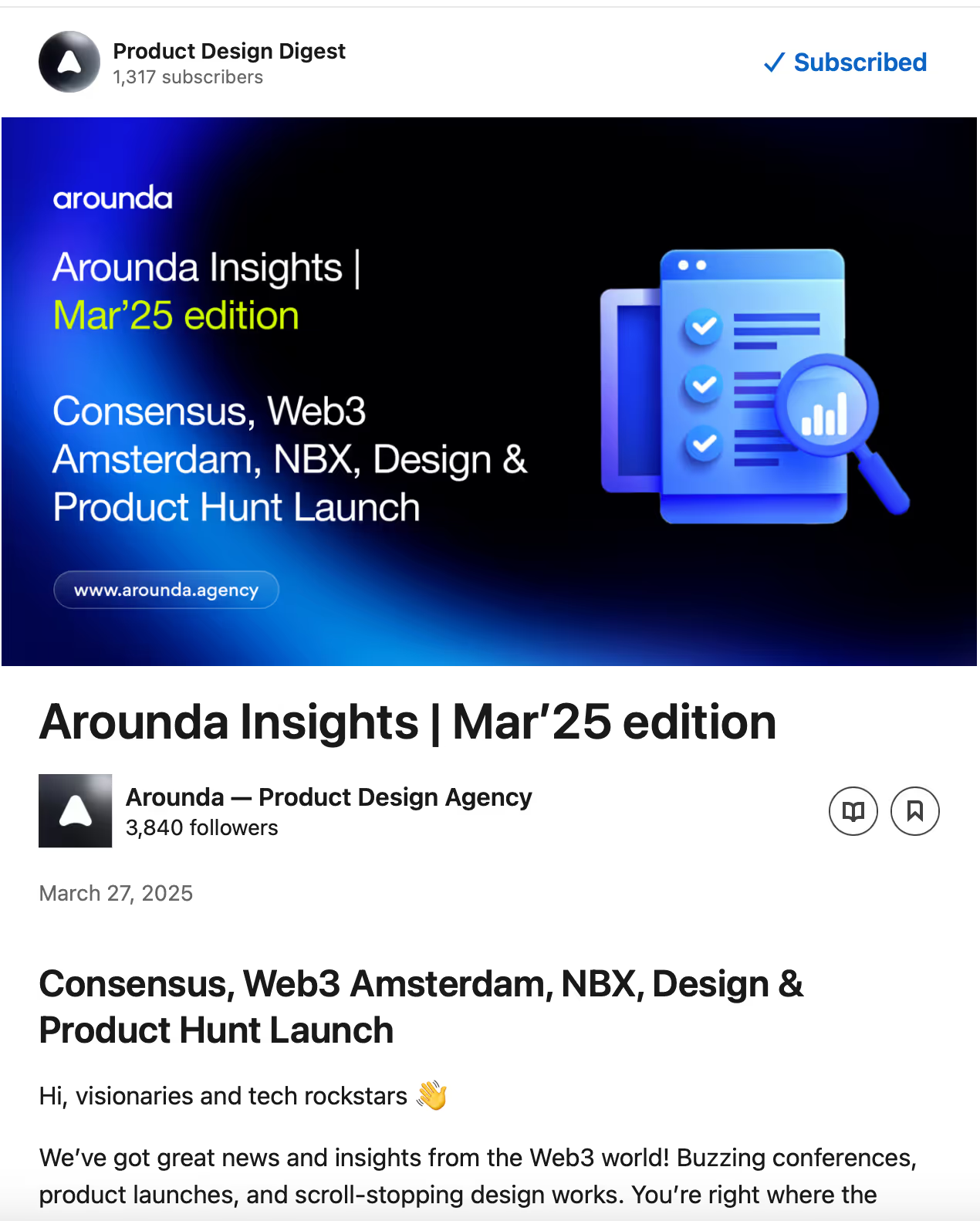
To make this process easier for you, our team has created a checklist to know exactly when you’re ready for the next step, “Measuring the impact.”
Still, worry about not missing anything? Our team has created a checklist so you can know exactly if you’re ready for the next step, “Measuring the impact.”
Checklist: Strong B2B brand in SaaS and Fintech
Brand strategy.
- Know who my company talks to (and what they care about).
- Define my core message and long-term vision.
- Position my brand clearly against competitors.
- Align my messaging with business goals.
Thought leadership.
- Share useful and expert content.
- Talk about industry trends.
- Show my team’s expertise across channels.
- Help my audience make smarter decisions.
Visual identity.
- Use clean, professional visuals that match my brand voice.
- Stay consistent across the site, product, and socials.
- Keep my tone and look the same everywhere.
Personalization and data.
- Speak differently to different audiences.
- Use insights to send more relevant messages.
- Make every touchpoint feel like it was made for them.
Authority and partnerships.
- Partner with trusted names in my industry.
- Co-create content or host events with them.
- Get my leadership team involved in key communities.
- Use real proof (logos, testimonials, case studies) to build trust.
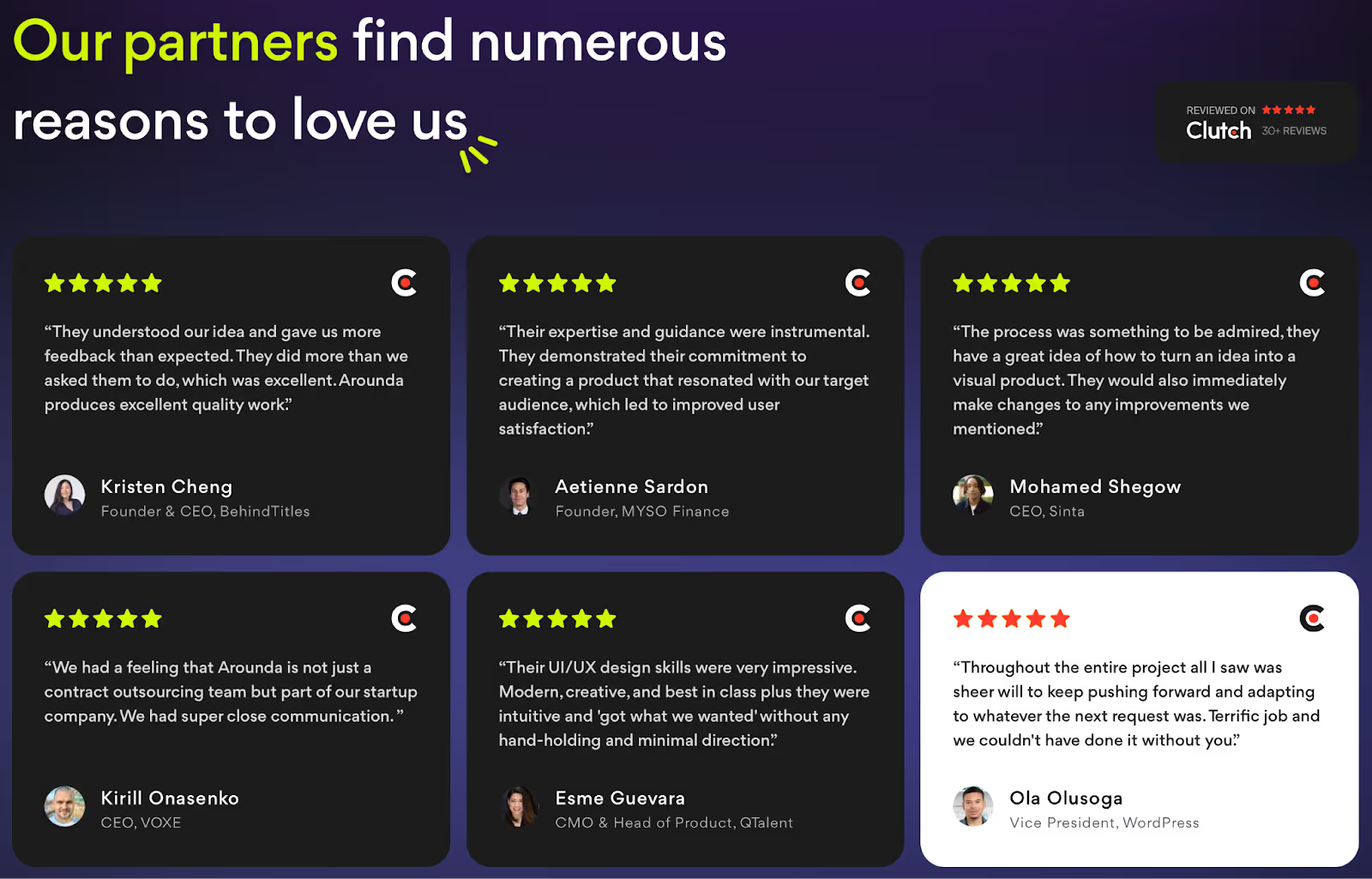
When you’ve done everything right, it's time to measure the impact.
Measuring the Impact of B2B Branding in SaaS and Fintech
Branding can feel intangible until you can actually track the results. It’s not as instant as ad clicks or demo sign-ups, but a strong brand delivers long-term, compounding outcomes. You should know what to measure and how to connect branding to business outcomes.
Key branding metrics
We recommend tracking metrics that reflect trust, relevance, and strategic visibility.

1. Branded search volume. When prospects search your company name or branded terms, it signals growing market recognition.
2. Direct traffic. An increase in direct visits to your site (vs. referrals or ads) often indicates brand familiarity.
3. Engagement quality (behavioral metrics) - time on site, pages per session, scroll depth, repeat visits. They indicate how well your brand messaging and experience resonate with your audience.
4. Share of voice. Analyze mentions in digital media, podcasts, reports, LinkedIn, and niche forums. A rising SOV signals increasing influence within your category.
5. Branded traffic conversion rate. This tells you if brand awareness is translating into qualified leads.
6. Customer perception metrics (qualitative). Include NPS, brand sentiment surveys, and buyer feedback. These insights will show you if your brand is aligned with how your market sees you. And if not, what needs adjusting.
Tracking brand authority through media mentions and backlinks
Do you know how the industry talks about you when you're not in the room? The more your name appears in respected media, trusted platforms, and high-quality content, the more weight your brand carries.
Q: How to monitor media mentions?
A: We recommend tracking with Google Alerts, Mention or Brand24, and BuzzSumo.
Q: Why it’s important?
A: You can understand how visible and credible your brand is becoming in your space. When industry blogs, analysts, or news sites reference your company, it signals growing influence.
Q: What to look for?
A: Type of publication (mainstream media vs. niche blogs), sentiment (positive, neutral, or negative), volume over time (monthly/quarterly growth), relevance to your target audience or industry.
Q: What about backlinks?
A: Backlinks are digital endorsements. When respected domains link to your site, it signals that your content (and, by extension, your brand) is valuable.
Q: How to track it?
A: Use Ahrefs, SEMrush, or Moz to know the total number of backlinks, referring domains, domain authority of sites linking to you, and new vs. lost links over time.
Brand authority tells partners, prospects, and investors: “This company knows its space, and the industry knows it too.”
ROI of branding: customer acquisition vs. lifetime value
Strong branding lowers your Customer Acquisition Cost (CAC) and increases your Customer Lifetime Value (LTV). How exactly?
- Lower CAC. When prospects already trust your brand, they move through the funnel faster. Less time convincing, more time converting.
- Higher LTV. Brand loyalty leads to longer relationships, more renewals, and higher upsell potential. Clients who believe in your brand are more likely to grow with you.
Branding doesn’t always produce instant results, but over time, it drives more qualified leads, higher conversions, and greater customer loyalty.
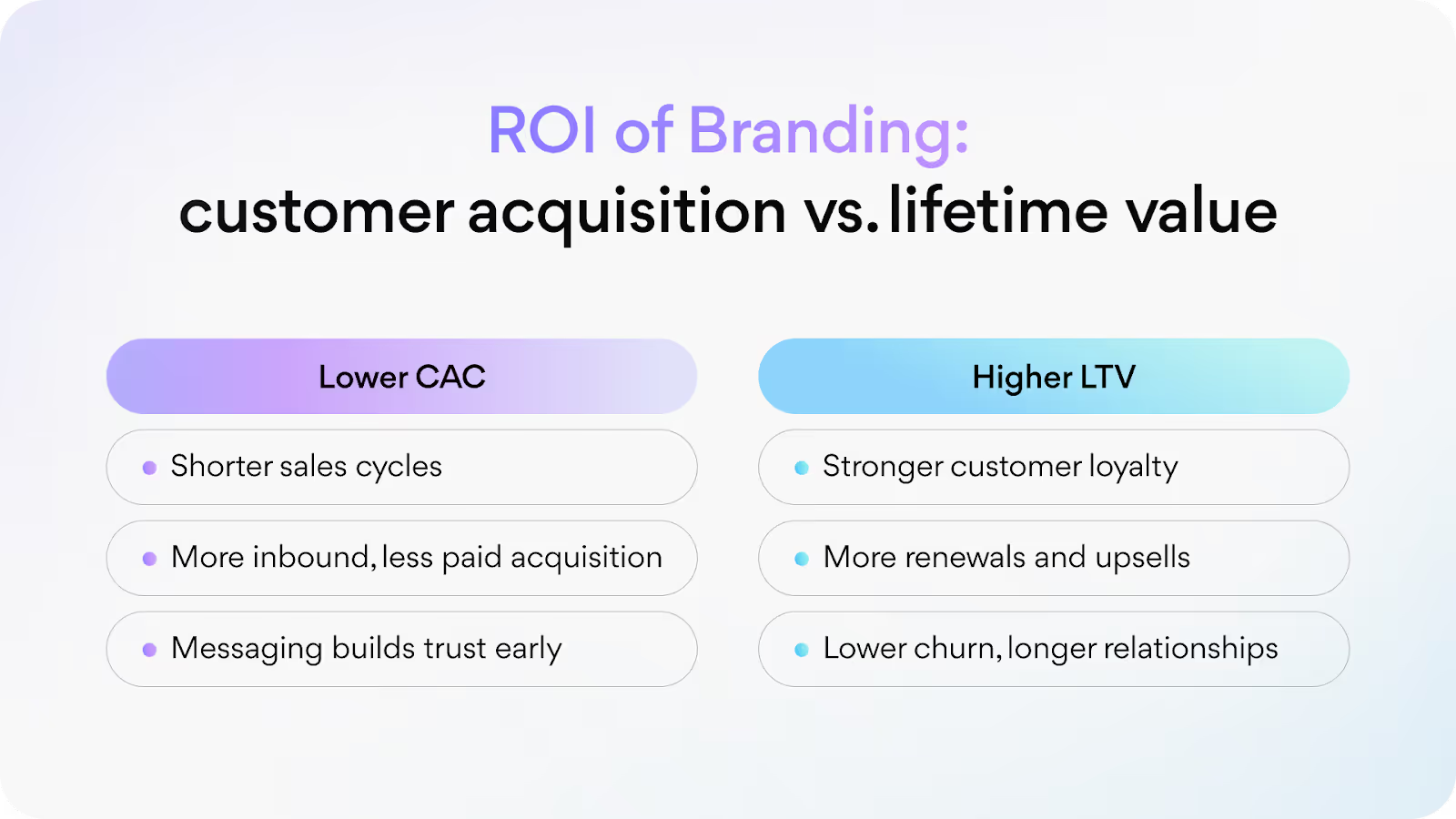
Strong ROI starts with a strong strategy! And that’s not something AI or low-budget brand identity can deliver. Buyers notice when branding lacks depth or clarity in B2B, especially in SaaS and Fintech.
If your goal is trust, loyalty, and growth, cutting corners won’t get you there. Wondering how much branding costs? We explained it in detail in our branding cost guide.
Now it’s time for some inspiration with the best B2B branding examples.
Case Studies: Successful B2B Brands
Some brands define the category and lead the competition race. Our designers analyzed how companies like Stripe, HubSpot, and Plaid built connecting and converting branding systems.
1. Stripe: Simplifying Digital Payments with a Strong Brand
Stripe is a developer-first digital payments platform that powers financial infrastructure and is trusted to handle billions in transactions.
What is worth your attention
- The Stripe brand is an example of clarity and restraint.
- The design system leans on simplicity with minimal UI, intuitive hierarchy, and clean typography.
- Everything is functional with no overdesigned elements or design for design only.
- Their visual identity uses confident blues and monochrome tones for trust and reliability.
- Even the developer documentation feels designed with careful spacing, clean code blocks, and just the right balance of text and visuals.
- The website communicates complex capabilities through smooth interaction design, animated flows, and generous white space.

2. HubSpot: Thought Leadership and Community Engagement
HubSpot is a CRM and inbound marketing platform that helps businesses grow by attracting, engaging, and delighting customers.
What is worth your attention
- HubSpot’s branding is accessible and energetic.
- The color palette (warm oranges, gradients, and soft blues) feels tech-savvy but human.
- The typography is friendly, open, and clear.
- Layouts are clean but content-rich to support the brand’s massive library of resources without overwhelming the user.
- Icons and illustrations support storytelling and make even the driest topics feel digestible.
- HubSpot excels in its community-facing design (every touchpoint feels part of a single, well-structured ecosystem).
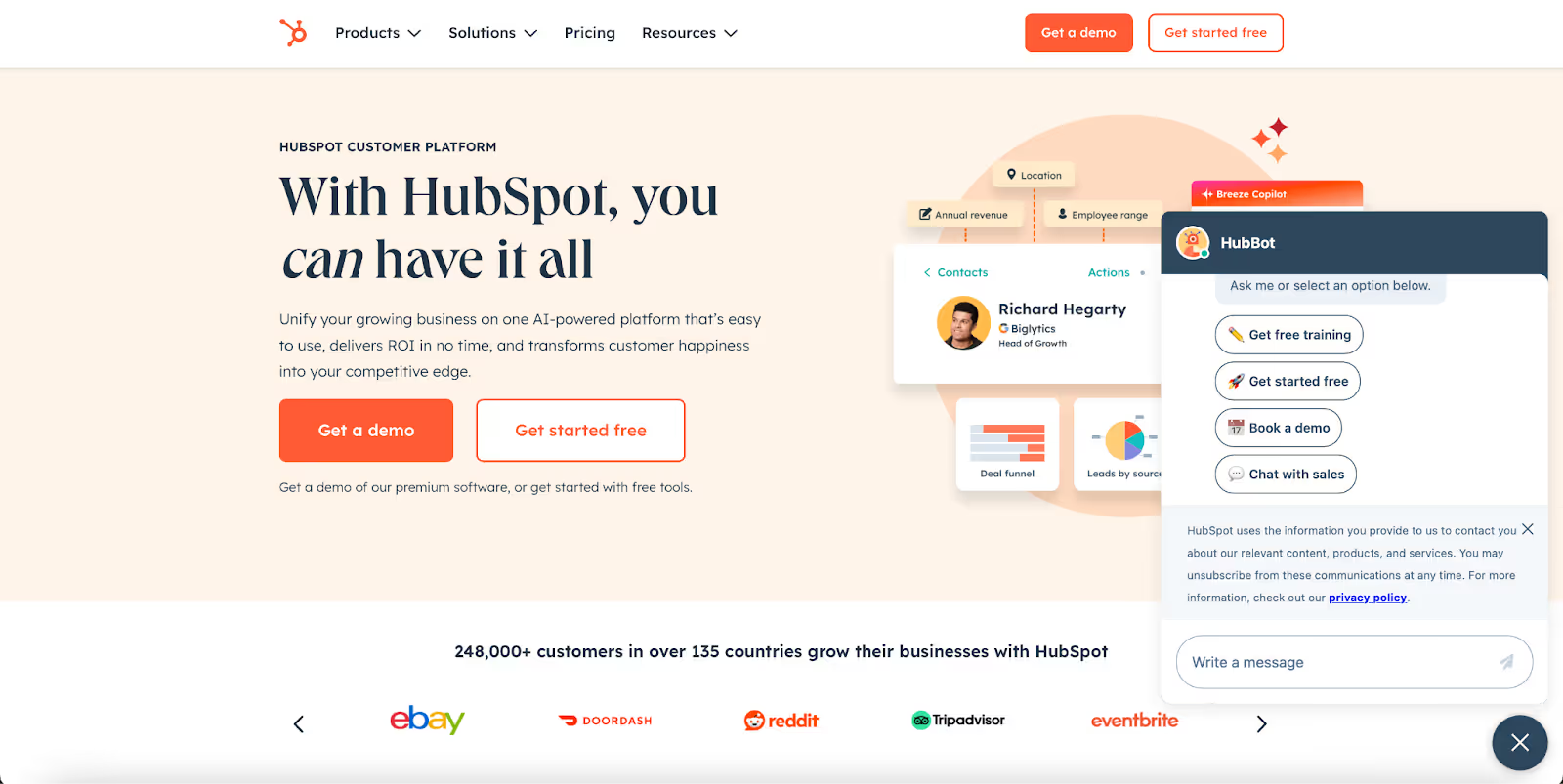
3. Plaid: Building Trust Through Transparency in Fintech
Plaid is a fintech infrastructure company that connects users’ bank accounts to financial apps (peer-to-peer payments, stock trading, or cryptocurrency investing). Users can securely access banking data, verify accounts, and move money.
What is worth your attention
- Plaid’s brand leans into a sense of calm professionalism.
- The design system is built around whitespace, soft neutrals, and refined typography.
- The design focus is on security and transparency.
- Modular grids, subtle animations, and clear CTAs guide users and help avoid overcomplication.
- The language is plainspoken (no fintech jargon, but a reassuring tone).
- The visuals that represent data flow and security are stylized and remove anxiety.
- There's no “high-tech overwhelm”. Every screen, every line of copy, and every touchpoint builds trust quietly but effectively.
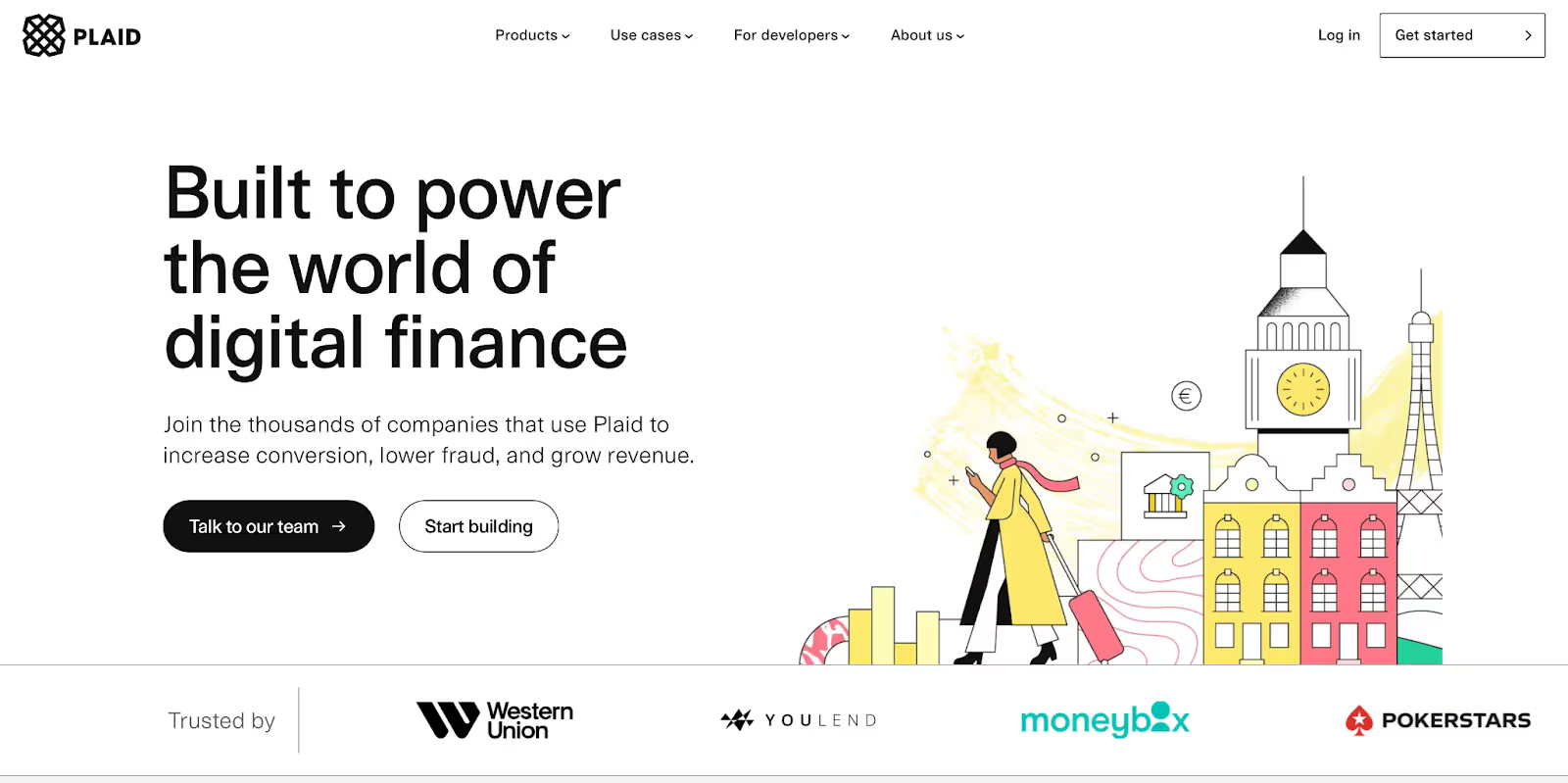
Need more Fintech or SaaS examples? Then welcome to our cases. Explore. Get inspired. Create.
These companies used design as a strategic tool to support their product, position, and growth. If your brand no longer reflects your value or you're starting fresh in a competitive space, you can rely on our branding services! Our 280+ clients loved the process and results, so join them and enjoy!
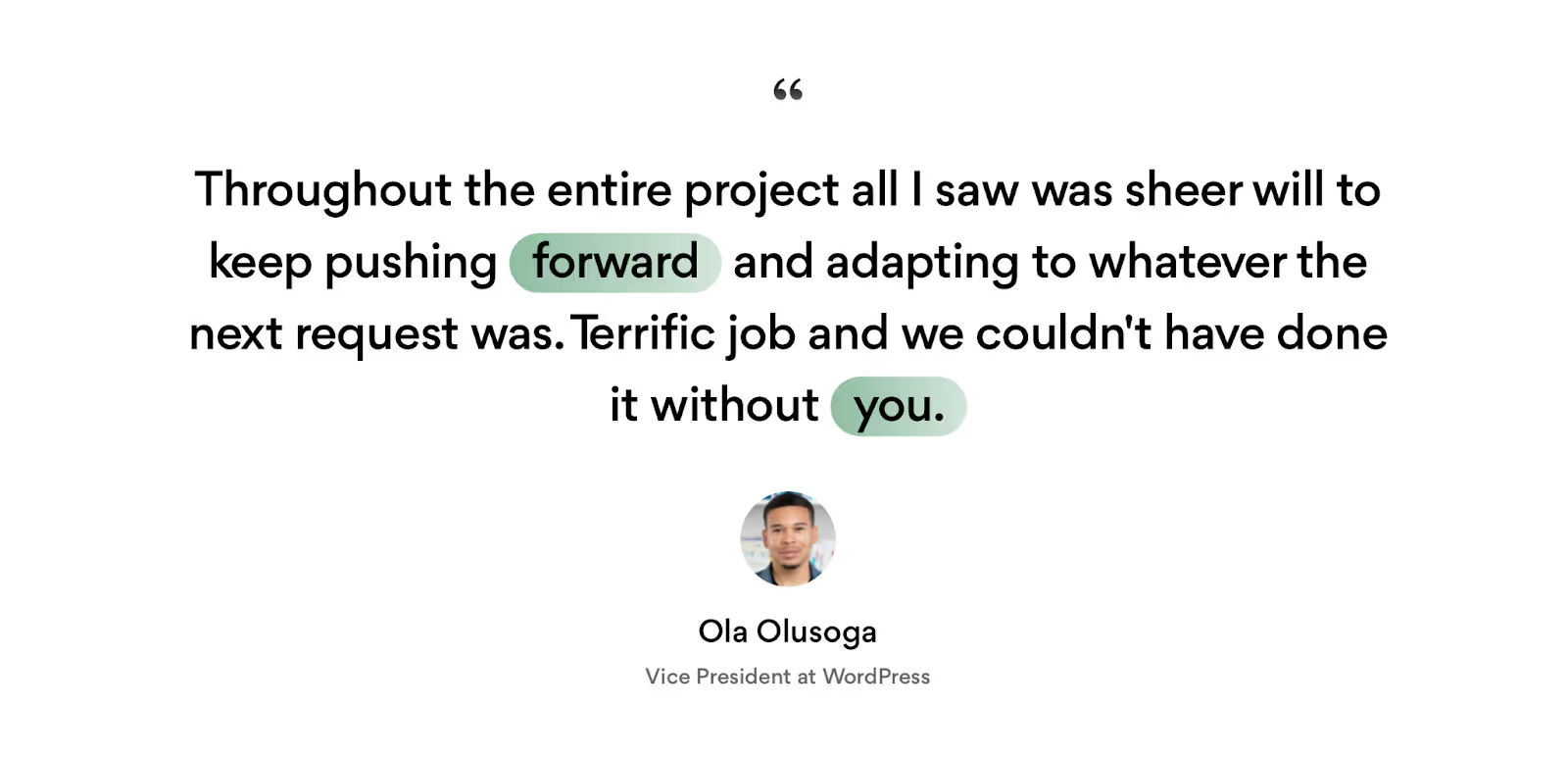
Final Thoughts
In SaaS and Fintech, the best products are the ones that get shortlisted, shared, and trusted. The ones that feel credible before the first call even happens.
That’s the power of branding done right.
The right strategy brings real impact! At least:
- 27% higher ROI
- increased revenue by 33%
- x2 loyal customers
Our team has 9+ years of experience helping SaaS and Fintech companies build brands that reach remarkable results and really meet users' needs. Based on research without guessing work! From strategy to design, every move we make grows business impact.
Ready to build (or rebuild) a brand businesses trust to lead the future? Contact us.














